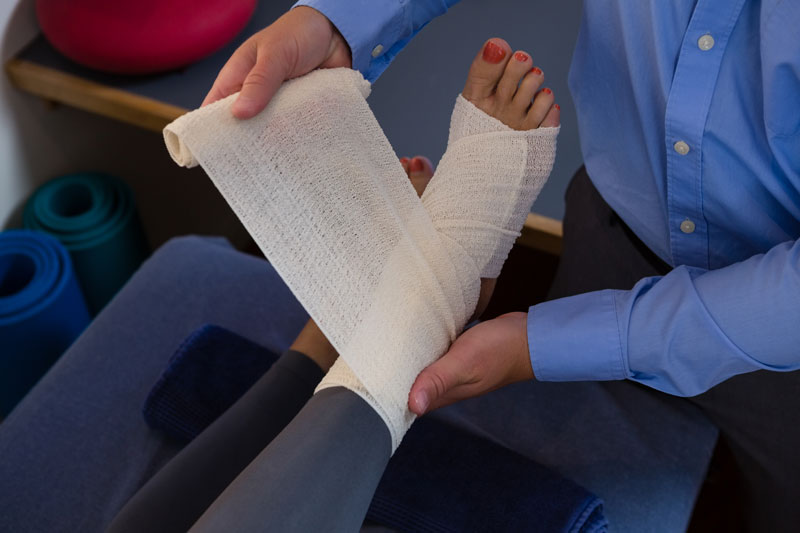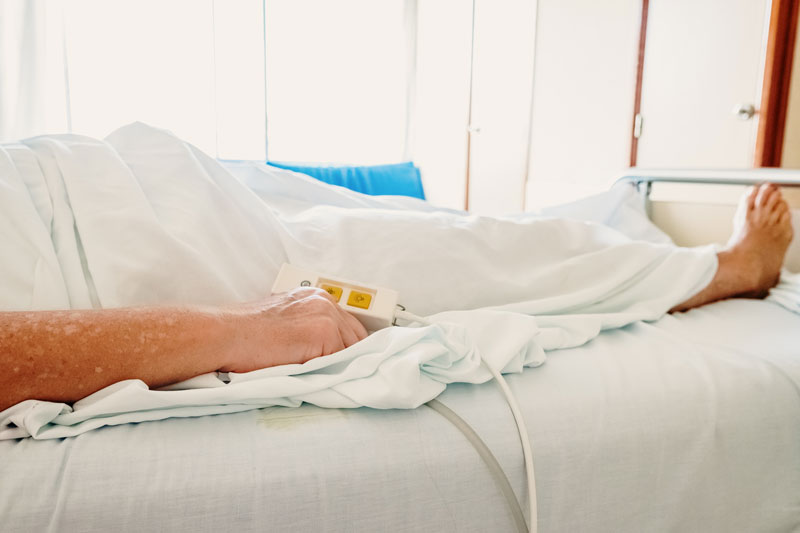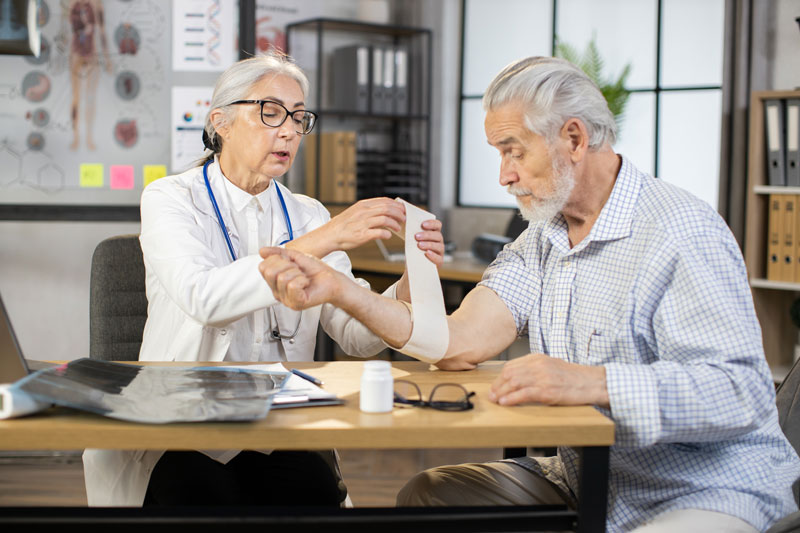What are Arterial & Venous Leg Ulcers?
What Causes Arterial & Venous Leg Ulcers?
Symptoms of Arterial & Venous Leg Ulcers
Arterial and venous leg ulcers present with distinct sets of symptoms. For arterial leg ulcers, patients may experience:
- Pain: Persistent, severe pain in the legs, particularly during rest or physical activity.
- Cool and Pale Skin: The affected area may feel cool to the touch and appear pale due to reduced blood flow.
- Shiny and Thin Skin: The skin surrounding the ulcer may appear shiny, thin, and dry.
- Lack of Hair Growth: Decreased or absent hair growth on the lower extremities is common.
- Slow Healing: Arterial ulcers often have a slow-healing nature and may expand in size over time.
On the other hand, venous leg ulcers exhibit the following symptoms:
- Swelling: The affected leg may swell, especially after prolonged standing or sitting.
- Discolored Skin: The skin around the ulcer may appear reddish-brown or darkened.
- Pain or Aching: Patients may experience aching or pain, which worsens with leg elevation.
- Weeping or Oozing: Venous ulcers can produce a clear fluid or pus-like discharge.
- Irregularly Shaped Borders: The borders of venous ulcers are typically irregular and less defined.
- Advanced Wound Healing Modalities: Employing growth factors, cellular therapies, or skin substitutes to enhance healing in complex cases.
If you experience any of these symptoms, seeking prompt evaluation and care from our specialized wound care practices at Mobile Wounds is essential to properly diagnose and manage arterial and venous leg ulcers.
Treatment Options for Arterial & Venous Leg Ulcers
Effective management of arterial and venous leg ulcers involves a comprehensive and individualized approach to address the underlying causes and promote healing. The following are some of the key treatment options for arterial and venous leg ulcers:
Arterial Leg Ulcers:
- Improving Blood Flow: Treatments aim to address peripheral arterial disease (PAD) through medication, angioplasty, or vascular surgery to improve blood flow to the legs.
- Wound Debridement: Removing dead or infected tissue from the ulcer to promote healing.
- Offloading: Reducing pressure on the affected leg through the use of specialized footwear or casts to facilitate wound closure.
- Hyperbaric Oxygen Therapy: Administering oxygen in a pressurized chamber to promote wound healing.
- Pain Management: Utilizing various methods to address the severe pain associated with arterial leg ulcers.
Venous Leg Ulcers:
- Compression Therapy: Using specialized bandages or stockings to reduce swelling and improve venous return.
- Wound Dressings: Applying appropriate dressings to create a moist wound-healing environment and protect the ulcer.
- Elevation: Elevating the leg when sitting or lying down to reduce swelling.
- Leg Exercises: Engaging in regular leg exercises to improve blood circulation.
- Venous Ablation: Using minimally invasive techniques to treat underlying venous insufficiency.
Frequently Asked Questions about Arterial & Venous Leg Ulcers
1. Can arterial and venous leg ulcers heal on their own?
Arterial and venous leg ulcers typically do not heal on their own without proper treatment. These ulcers are often chronic and require specialized care to address the underlying causes and promote effective healing. Without appropriate management, arterial leg ulcers may worsen, leading to severe pain and potential complications, while venous leg ulcers can persist and become larger over time. Seeking professional wound care and adhering to a personalized treatment plan is crucial to optimize healing and alleviate symptoms.
2. Are compression stockings effective for treating venous leg ulcers?
Yes, compression stockings are an essential part of the treatment for venous leg ulcers. Compression therapy helps reduce swelling, improve venous return, and support wound healing. By applying pressure to the legs, compression stockings prevent blood from pooling and aid in pushing it back towards the heart. This helps alleviate symptoms associated with venous leg ulcers and promotes more efficient wound healing. However, it is essential to consult a wound care specialist to determine the appropriate compression level and ensure proper fit to achieve optimal results.
3. Can lifestyle changes help prevent arterial and venous leg ulcers?
Yes, certain lifestyle changes can contribute to the prevention of arterial and venous leg ulcers. For arterial leg ulcers, lifestyle modifications may focus on managing peripheral arterial disease (PAD) risk factors, such as adopting a heart-healthy diet, quitting smoking, exercising regularly, and controlling blood pressure and cholesterol levels. For venous leg ulcers, elevating the legs when sitting or lying down, engaging in leg exercises, and wearing compression stockings can help reduce the risk of developing venous insufficiency and subsequent ulcers. If you have diabetes or other underlying conditions that may increase the risk of leg ulcers, adhering to a proper management plan as advised by your healthcare provider is essential to minimize complications.







